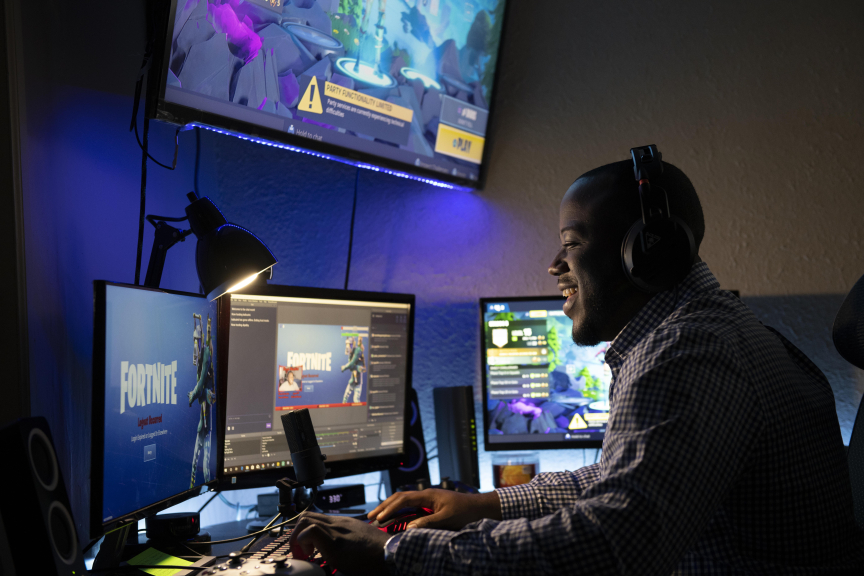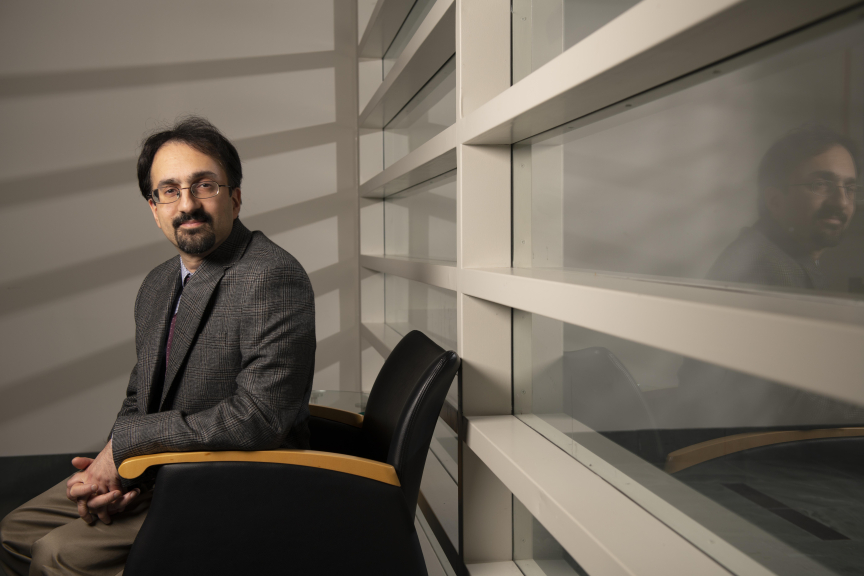Finding and Fighting Multiple Sclerosis in Pediatric Patients

Alexander Wallerson started to realize something was wrong at the age of 12 when he was at the movies with his mother. Now 26, he remembers the specific moment. It was the first time he experienced the signs of multiple sclerosis (MS).
“I walked like I was drunk,” says Wallerson, who lives in New Brunswick. “I was limping but not in pain.”
His mother, a nurse, was concerned and brought him to their family doctor. Imaging tests revealed that Wallerson had relapsing-remitting MS.
After multiple visits to the hospital and frequent relapses, he sought treatment at the state’s only pediatric MS program, which is now part of Rutgers. Finding the right care enabled him to lead a normal childhood despite dealing with the effects of the disease.
It’s estimated that more than 8,000 American children are currently fighting MS. The most common presentations of the disease include optic neuritis, transverse myelitis, arm-leg weakness, sensory disturbances, or balance problems. And like most diseases, early intervention offers the greatest hope of mitigating patients’ symptoms.
Pediatric neurologist Vikram Bhise, associate professor of pediatrics and chief, division of child neurology and neurodevelopmental disabilities at Rutgers Robert Wood Johnson Medical School, has dedicated his career to treating MS and other central demyelinating diseases. The unifying characteristic of these diseases is that they damage myelin, the substance that coats the brain’s nerve fibers. As the medical director of the Pediatric MS Program at the Child Health Institute of New Jersey, Bhise evaluates and treats patients presenting with neurological symptoms, focusing on each child’s functional and cognitive status.
Finding and Fighting MS

When a patient experiences symptoms that might indicate a neuroimmune condition, Bhise orders an MRI of the brain and often a lumbar puncture – the two most useful clinical indicators. The number and pattern of lesions on the brain visualized by the MRI help determine the level of severity. An MRI of the spinal cord and a blood test to determine biomarkers in serum provide more clinical clues, including if the condition is one that will recur, such as MS. Then he facilitates a frank discussion with patients and their families about his findings and the treatment options, including the potential side effects and risks of each. Establishing a relationship of trust is key.
The only dedicated pediatric MS program in the state, Rutgers Health works in collaboration with pediatric-specific ophthalmology, rehabilitation, physical therapy, psychology, urology, nephrology, and cognitive specialists to provide cutting-edge therapies, patient and family education, and access to clinical trials. Education in particular is a key component to care, Bhise says, since general pediatricians and neurologists may not have fully explained the disorder prior to referral.
A comprehensive care plan is developed for each patient to address education, cognition, social functioning, mental health, daily activities, and quality of life. The disease often is more inflammatory in children, causing younger patients to have more frequent attacks than adults.
The Subtle—Yet Serious—Signs of Neurological Disease
Like Wallerson, many patients first experience motor and body-movement issues. Other signs of MS include sensory issues, such as numbness and tingling in the body; optic neuritis, which can appear as blurred vision, pain in the eye, and/or color desaturation; and bladder leakage or urgency.
Wallerson’s high school years were punctuated with short episodes of double vision, right-side numbness, and left-side weakness. He discussed these issues with Bhise, who prescribed a regimen of Rebif (interferon beta-1a) injections every other day. Throughout his teen years, Wallerson continued to play tennis and exercise, and he followed a healthy diet. He suffered only one major attack in high school and was able to graduate near the top of his class, garnering scholarships for college.
Helping Patients Hold On to Hope
Fostering hope in his patients is one of the most important services that Bhise provides. He helps patients feel empowered about their care and invested in continuing treatment.
“Committing to the care plan is how patients can exercise a sense of control over their health. I explain to patients, ‘Everything that you’re doing today will have a positive impact on your future.’ It’s easy for them to become overwhelmed, so I help remind them of the ways that life is still pretty good,” says Bhise.